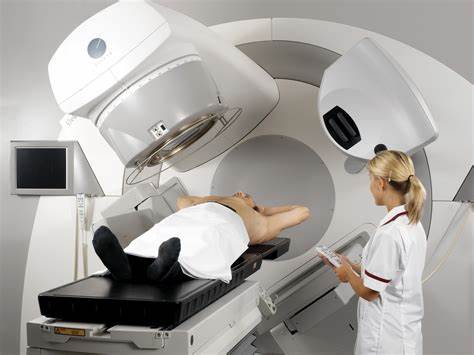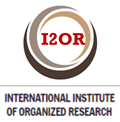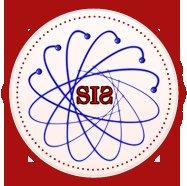Radioterapia en pacientes con tumores cerebrales primarios. Hospital V.I. Lenin, noviembre 2014 - ¬ mayo 2017
Texto completo:
PDF
Resumen
Los tumores primarios del cerebro constituyen un grupo heterogéneo de neoplasias con comportamiento biológico y con pronóstico muy diferente. Su incidencia se ha incrementado en los últimos años en todos los grupos de edades. Se realizó un estudio descriptivo prospectivo de 58 pacientes con tumores cerebrales primarios, atendidos en la consulta de Radioterapia del Centro Oncológico del Hospital Vladimir Ilich Lenin en el período de Noviembre del 2014 a Mayo del 2017, con el objetivo de determinar los síntomas físicos y las manifestaciones cognitivas en pacientes tratados por tumores cerebrales primarios. Se caracterizaron las variables de edad y sexo, diagnóstico histológico, tratamiento oncológico, síntomas físicos y manifestaciones cognitivas. El grupo de edad entre los 40 y 59 años fue el más afectado (51,72%), siendo en el sexo masculino más frecuente esta patología (65,52%). El tipo histológico que predominó fue el astrocitoma en un 77,11 %. Se empleó la radioterapia en el 100% de los pacientes, y concurrente al nimotuzumab en 43 pacientes. Los síntomas físicos más frecuentes fueron los trastornos del sueño (39,28%), y dentro de las manifestaciones cognitivas identificadas los problemas visuales alcanzaron el 35%. Los síntomas físicos y las manifestaciones cognitivas producidas, ya sea por el tumor primario o por el tratamiento oncológico en pacientes con tumores cerebrales primarios, son factores que influyen negativamente en la calidad de vida de estos pacientes.
Palabras clave
Referencias
Tumores pediátricos del sistema nervioso central. Cancer.net [Internet]. 2019 [citado 10/5/2019]. Disponible en: https://www.cancer.net/es/tipos-de-c%C3%A1ncer/tumor-del-sistema-nervioso-central-c%C3%A1ncer-infantil/introducci%C3%B3n
Essig M, Anzalone N, Combs SE, Dörfler A, Lee SK, Picozzi P, et al. MR imaging of neoplastic central nervous system lesions: Review and recommendations for current practice. Am J Neuroradiol 2012; 33(5): 803-17.
Attia A, Page BR, Lesser GJ, Chan M. Treatment of radiation-induced cognitive decline. Curr Treat Options Oncol 2014; 15(4): 539-50.
McNeill KA. Epidemiology of brain tumors. Neurol Clin 2016; 34(4): 981-98.
Cayuela N, Simo M. Neurotoxicidad cognitiva inducida por la radioterapia cerebral en adultos. Rev Neurol 2019; 68(4): 160-168.
Edelstein K, Richard NM, Bernstein LJ. Neurocognitive impact of cranial radiation in adults with cancer: an update of recent findings. Curr Opin Support Palliat Care 2017; 11(1): 32-37.
Louis DN, Perry A, Reifenberger G, Von Deimling A, Figarella-Branger D, Cavenee WK, et al. The 2016 World Health Organization classification of tumors of the central nervous system: a summary. Acta Neuropathol 2016; 131(6): 803-20.
Ostrom QT, Gittleman H, Xu J, Kromer C, Wolinsky Y, Kruchko C, et al. CBTRUS Statistical Report: Primary brain and other central nervous system tumors diagnosed in the United States in 2009-2013. Neuro Oncol 2016; 18(Suppl 5): S1-75.
Goldbrunner R, Minniti G, Preusser M, Jenkinson MD, Sallabanda K, Houdart E, et al. EANO guidelines for the diagnosis and treatment of meningiomas. Lancet Oncol 2016; 17(9): 383-91.
Fathi A-R, Roelcke U. Meningioma. Curr Neurol Neurosci Rep 2013; 13(4): 337.
Rapalino O, Batchelor T, González RG. Intra-axial brain tumors. Handb Clin Neurol 2016; 135: 253-74.
Rapalino O, Smirniotopoulos JG. Extra-axial brain tumors. Handb Clin Neurol 2016; 135: 275-91.
Lopes MBS. The 2017 World Health Organization classification of tumors of the pituitary gland: a summary. Acta Neuropathol 2017; 134(4): 521-35.
Buttrick S, Shah AH, Komotar RJ, Ivan ME. Management of atypical and anaplastic meningiomas. Neurosurg Clin N Am 2016; 27(2): 239-47.
Spasic M, Pelargos PE, Barnette N, Bhatt NS, Lee SJ, Ung N, et al. Incidental Meningiomas: Management in the Neuroimaging Era. Neurosurg Clin N Am 2016; 27(2): 229-38.
Noorani I, Sanai N. Surgical management of incidental gliomas. Neurosurg Clin N Am 2017; 28(3): 397-406.
Baumert BG, Hegi ME, Van den Bent MJ, Von Deimling A, Gorlia T, Hoang-Xuan K, et al. Temozolomide chemotherapy versus radiotherapy in high-risk low-grade glioma (EORTC 22033-26033): a randomised, open-label, phase 3 intergroup study. Lancet Oncol 2016; 17(11): 1521-32.
Suarez Martínez G, Salva Camaño SN, Piedra Sierra P, Iglesias Castillo B, Toledo Jiménez C, Solomón Cardona MT, et al. Seguridad y efectividad del nimotuzumab en los pacientes con tumores gliales malignos. Rev Cubana Neurol Neurocir 2015; 5(2): 123–32.
Ocampo Navia M, Gómez Vega J, Feo Lee O. Epidemiología y caracterización general de los tumores cerebrales primarios en el adulto. Universitas Médicas 2019; 60(1): 1-14.
Braganza MZ, Kitahara CM, Berrington de González A, Inskip PD, Johnson KJ, Rajaraman P. Ionizing radiation and the risk of brain and central nervous system tumors: a systematic review. Neuro Oncol 2012; 14(11): 1316-24.
Enlaces refback
- No hay ningún enlace refback.
Copyright (c) 2019 MULTIMED

Esta obra está bajo una licencia de Creative Commons Reconocimiento-NoComercial-CompartirIgual 4.0 Internacional.










